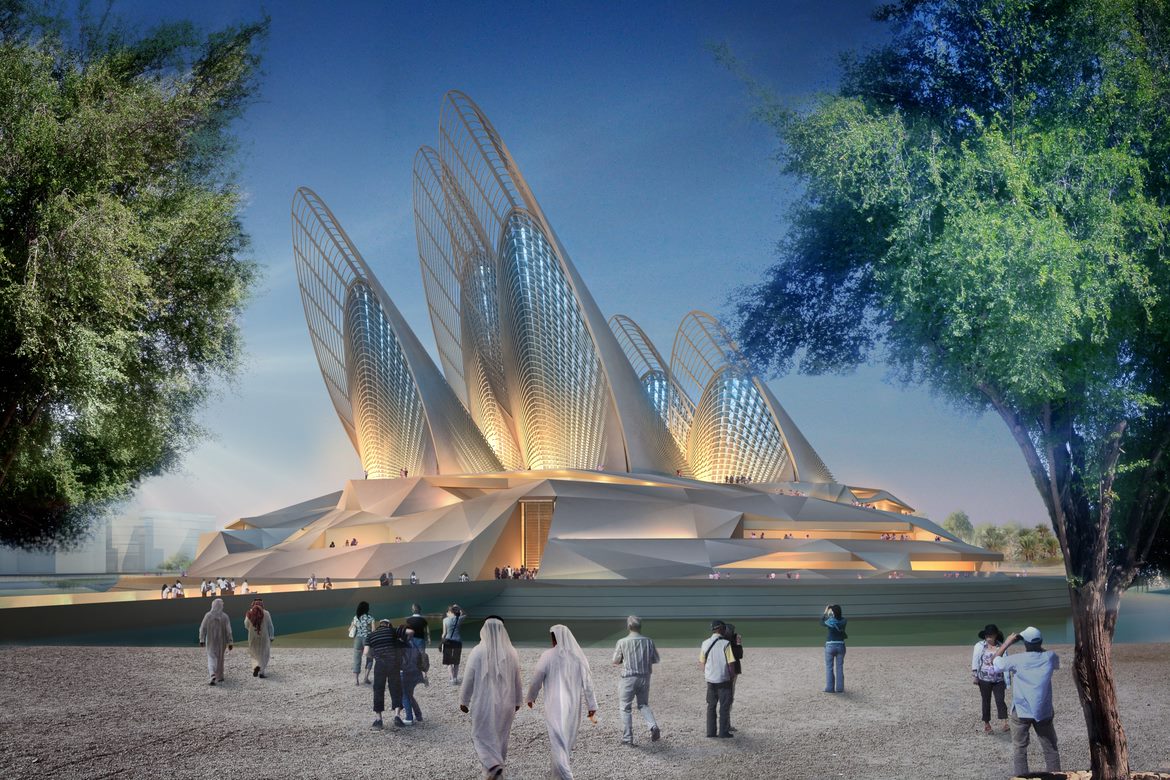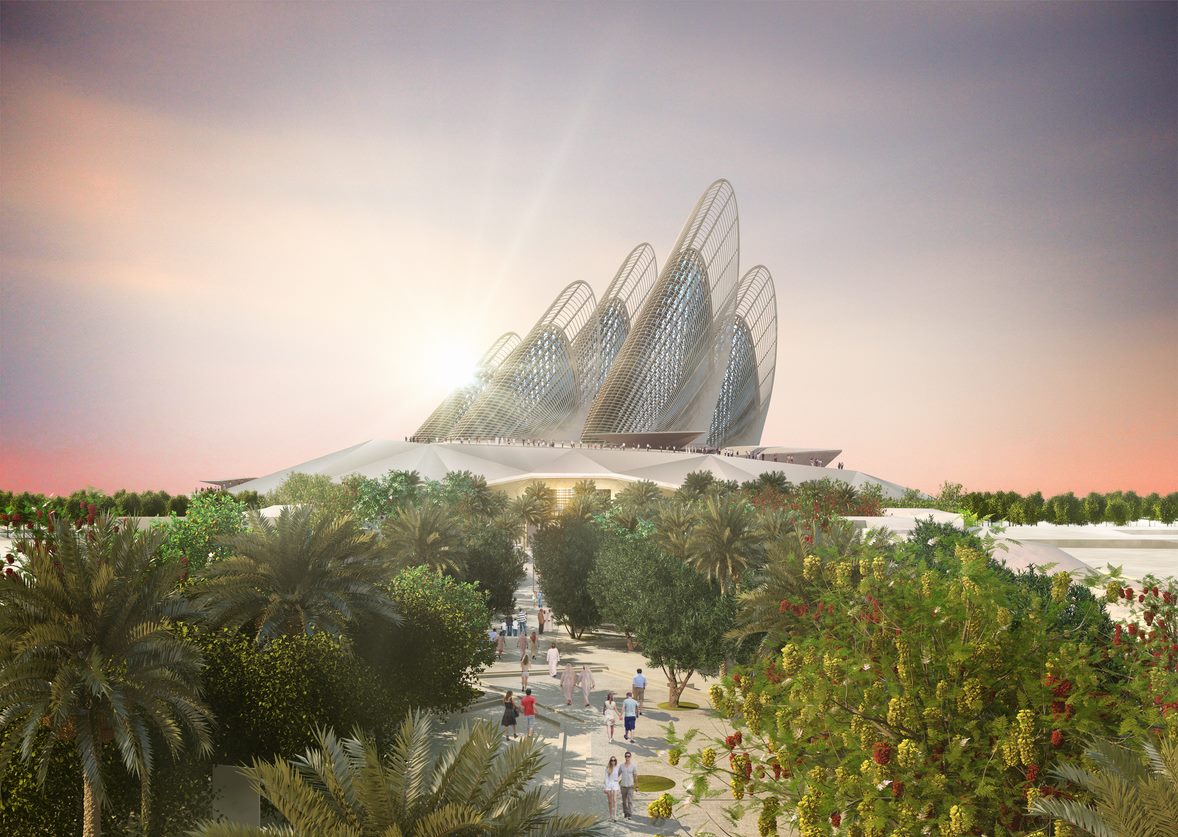The museum celebrates the rich history, culture and stories of the UAE.
Abu Dhabi, have you noticed the ginormous cranes near the Abrahamic Family House? They’re working on the Zayed National Museum. Smack bang in the vibrant heart of the Saadiyat Cultural District, this feather-like architectural wonder is one you cannot miss.
Shaped like the wings of a falcon, one of the UAE’s national symbols, the design by UK architects Foster + Partners is a marvel to behold. With towering atriums functioning as solar thermal towers and a mound-inspired structure to house galleries, shops and cafes, this architectural gem is sure to leave you in awe.
Ancient artefacts
First up is a fossil of a rudist clam, an ancient marine creature that existed a staggering 70 million years ago. The exhibition includes evidence of the region’s first humans dating back a whopping 300,000 years – and they left some serious goodies behind. Palaeolithic stone tools from that era will give you a glimpse of the ingenuity and resourcefulness that existed.
Now, let’s fast forward to the third century. The first coins ever used in this land were crafted during this period. These coins, adorned with inscriptions in Aramaic mentioning the ruler’s name, Abiel, bear witness to the flourishing trade and commerce with the rest of Arabia.

Faith and Diversity
The region now known as UAE played a pivotal role during the lifetime of the Prophet Muhammad (PBUH) as it was one of the earliest regions to embrace Islam. And the discovery of the earliest mosque in the UAE, dating back to the Abbasid period in Al Ain is a testament to the country’s deep-rooted Islamic heritage.
Let’s not forget the intriguing tales of Sir Bani Yas Island. While Islam spread across the land, a small group of Christians continued practising their faith in a monastery and a church on this very island. This shows the unique tapestry of cultures that have woven together to create the UAE’s vibrant identity.

A trading hub
Next, journey to the 15th century, the time of Julfar, a bustling centre of maritime trade that linked Africa, the Mediterranean and China. Ibn Majid, the renowned Arab navigator, hailed from this era, making Julfar a hotspot for merchants and explorers. Despite attempts by European powers, the UAE’s ancestors stood firm, fostering a strong sense of national identity.
The 1500-1700 period marks a significant moment in UAE’s history when the Bani Yas, one of the largest tribal groups, made their appearance in historical records. Establishing their stronghold on Abu Dhabi’s island, they laid the foundation for the nation’s capital.
As you progress, you’ll find yourself in the 1700-1900 era when the Qawasim rose to prominence as a dominant maritime and economic power in what is now Ras Al Khaimah and Sharjah. This period also witnessed increased British intervention in the Arabian Gulf, leading to clashes and attacks on northern cities.
Fast forward to the 20th century, the UAE’s modern journey began with the vision and leadership of its Founding Father, Sheikh Zayed bin Sultan Al Nahyan. From 1966, he spearheaded the nation’s economic development, culminating in the birth of the UAE on 2 December 1971.
Zayed National Museum’s opening date has not yet been confirmed. However, it is expected to open in 2025, coinciding with the opening of the Guggenheim Abu Dhabi.
Check in with FACT for the latest details.
GO: Visit https://zayednationalmuseum.ae for more information.


